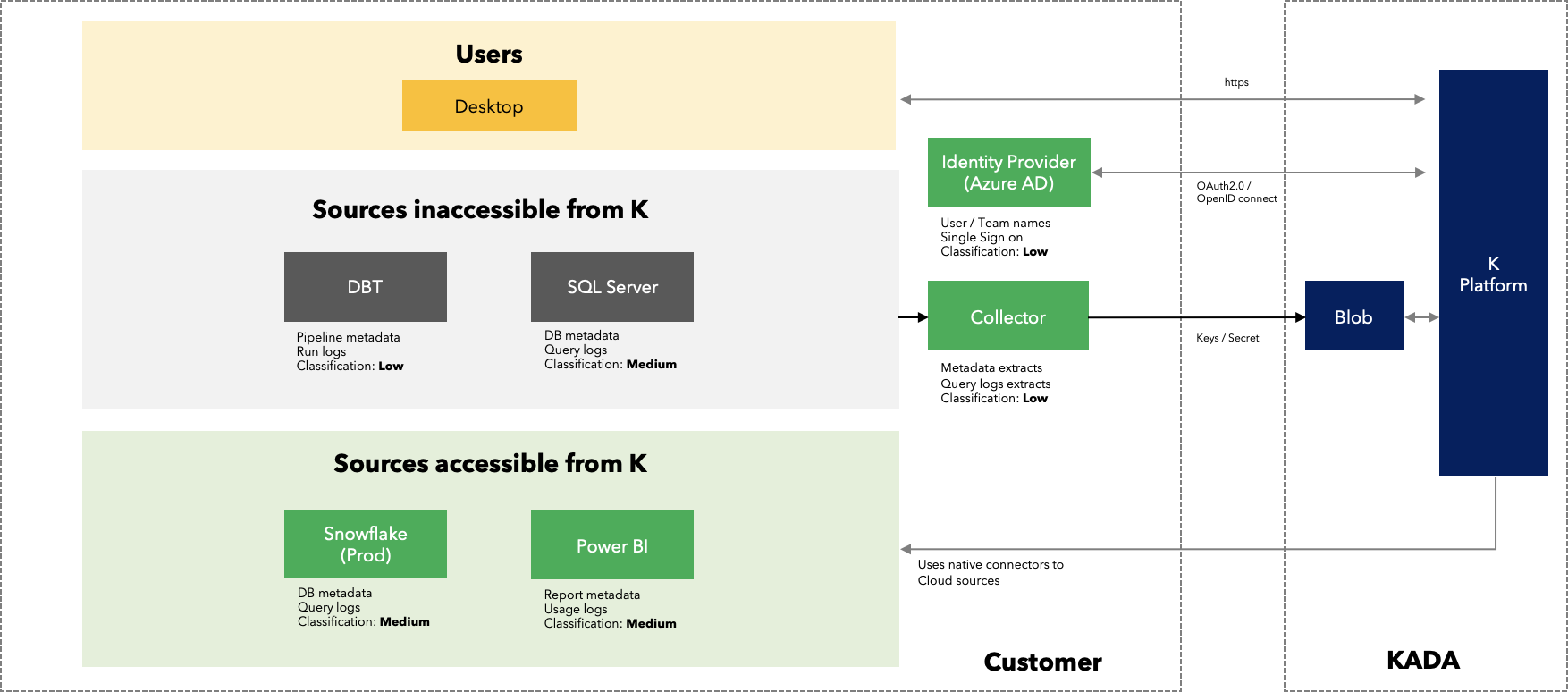Deployment Guide
There are 2 options for deploying the K platform: 1) SaaS; or 2) Your Cloud
SaaS
K is deployed as a single tenanted platform managed by KADA.
K can connect to your cloud sources directly, and you can deploy collectors internally to extract data from your internal sources and send the metadata and logs to K.
K can connect to your Identity Management solutions (like Azure AD) for Single Sign On.
K can be white listed to specific IP ranges to provide for extra security.

Your cloud
K can be deployed on your Cloud using your cloud’s Kubernetes Service.
This can include OpenShift, AWS’s Elastic Kubernetes Service (EKS), Azure Kubernetes Services (AKS) and Google Kubernetes Engine (GKE).
See this guide Deploying to your own Kubernetes Service to deploy K locally.
The following diagram outlines how K is deployed in a typical Enterprise environment.

Kubernetes Service
Components | Details |
Nodes | K is deployed across a number of nodes (minimum of 4 nodes). Each node requires a minimum of 4 vCPU and 16gb Memory. Contact the KADA team to work through the right sizing for your data ecosystem. Example specifications for cloud services include:
|
Object store | A location for landing files from data sources and data tools before processing by K. This location must be accessible by the Kubernetes Service. The typical size for the Object store is 200Gb but may need to expand depending on your data retention needs. |
Other Components
Components | Details |
KADA Repository | Your Image Registry connects to the KADA repository hosted externally (internet access required) to deploy and update the K platform. This approach enables you to quickly and easily download the K updates. |
Considerations
There a several considerations that should be checked prior to setting up K on your Kubernetes environment.
Policies:
Kubernetes service must have access to the Object Store.
In the case where the Kubernetes service is using a Cloud Provider’s managed service (e.g. AWS, GCP, Azure) this may require cloud policies to be created to enable the service with the right read/write permissions.
Please consult your Cloud Provider’s documentation
Internet Access:
The K platform does NOT need internet access.
The Kubernetes service needs to have internet access to download the K images from the KADA repository.
Related Articles
- Removing Local account access after SSO is enabled
- Updating an expired App secret used for Azure AD / Power BI integration
- Renaming a source
- How to disconnect and reactivate a source
- Configuring SSO with Okta
- How to upload a file to the K landing directory
- How to deactivate a source
- How to manually run a data load
- How to onboard a new source
- Managing local users (Add, Edit, Delete, Reset Password)
- Configuring role permissions
- Configuring SSO with Azure Active Directory / Entra ID
